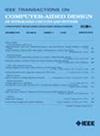逻辑芯片和内存芯片的玻璃贴片集成:PPA 和电源/信号完整性优势
IF 2.7
3区 计算机科学
Q2 COMPUTER SCIENCE, HARDWARE & ARCHITECTURE
IEEE Transactions on Computer-Aided Design of Integrated Circuits and Systems
Pub Date : 2024-11-21
DOI:10.1109/TCAD.2024.3504361
引用次数: 0
摘要
与硅相比,玻璃中间体已经成为2.5维异构集成的一个引人注目的选择。它允许在嵌入式模具和直接安装在上面的传统倒装芯片模具之间进行3-D堆叠配置,成本较低。此外,玻璃中的互连间距和玻璃通孔(TGV)直径与硅中的互连间距和通孔直径相当。在本研究中,我们研究了玻璃中间层提供的3d堆叠在功率、性能、面积(PPA)、信号完整性(SI)和功率完整性(PI)方面的优势。我们的研究采用芯片/封装协同设计方法,从RISC-V芯片的寄存器传输级描述发展到最终的图形数据系统(GDS)布局,利用台积电28纳米芯片和佐治亚理工学院的3-D玻璃封装作为中间层。与硅相比,玻璃中间层的面积减少了2.6倍,线长减少了21倍,全芯片功耗减少了17.72%,SI增加了64.7%,PI提高了10倍,热性能增加了35%。此外,我们还提供了与3d硅技术的详细对比分析。它不仅突出了玻璃中间体的竞争优势,而且还提供了对每种设计的潜在局限性和优化机会的关键见解。本文章由计算机程序翻译,如有差异,请以英文原文为准。
Glass Interposer Integration of Logic and Memory Chiplets: PPA and Power/Signal Integrity Benefits
Glass interposers have become a compelling option for 2.5-D heterogeneous integration compared to silicon. It allows 3-D stacking configuration between the embedded dies and the conventional flip-chip dies mounted directly on top at low cost. Furthermore, the interconnect pitch and through-glass-via (TGV) diameter in glass are becoming comparable to their counterparts in silicon. In this study, we investigate the power, performance, area (PPA), signal integrity (SI) and power integrity (PI) advantages of 3-D stacking afforded by glass interposers over silicon interposers. Our research employs a chiplet/package co-design approach, progressing from an register-transfer-level description of RISC-V chiplets to final graphic data system (GDS) layouts, utilizing TSMC 28 nm for chiplets and Georgia Tech’s 3-D glass packaging for the interposer. Compared to silicon, glass interposers offer a $2.6\times $ reduction in area, a $21\times $ reduction in wire length, a 17.72% reduction in full-chip power consumption, a 64.7% increase in SI and a $10\times $ improvement in PI, with a 35% increase in thermal. Furthermore, we provide a detailed comparative analysis with 3-D Silicon technologies. It not only highlights the competitive advantages of glass interposers, but also provides critical insights into each design’s potential limitations and optimization opportunities.
求助全文
通过发布文献求助,成功后即可免费获取论文全文。
去求助
来源期刊
CiteScore
5.60
自引率
13.80%
发文量
500
审稿时长
7 months
期刊介绍:
The purpose of this Transactions is to publish papers of interest to individuals in the area of computer-aided design of integrated circuits and systems composed of analog, digital, mixed-signal, optical, or microwave components. The aids include methods, models, algorithms, and man-machine interfaces for system-level, physical and logical design including: planning, synthesis, partitioning, modeling, simulation, layout, verification, testing, hardware-software co-design and documentation of integrated circuit and system designs of all complexities. Design tools and techniques for evaluating and designing integrated circuits and systems for metrics such as performance, power, reliability, testability, and security are a focus.

 求助内容:
求助内容: 应助结果提醒方式:
应助结果提醒方式:


